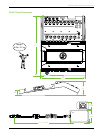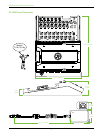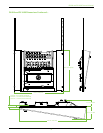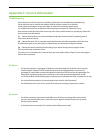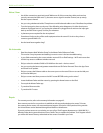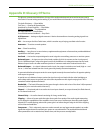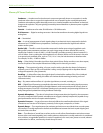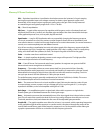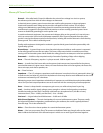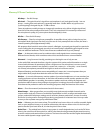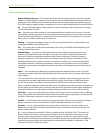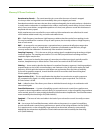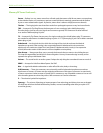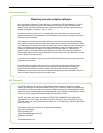
DL806 and DL1608 Owner’s Manual
39
Glossary Of Terms Continued...
EIN
— Equivalent Input Noise. A specication that helps measure the “quietness” of a gain stage by
deriving the equivalent input noise voltage necessary to obtain a given preamp’s output noise.
Numerically, it’s the output noise at a given gain setting minus the gain. EIN is usually measured
at a maximum gain and typically ranges from -125 to -130 dBu.
EQ
— Short for equalization.
EQ Curve
— A graph of the response of an equalizer, with frequency on the x (horizontal) axis and
amplitude (level) on the y (vertical) axis. Equalizer types and eects are often named after the shape
of the graphed response curve, such as peak, dip, bell and shelf.
Equalization
— Long for EQ. Equalization refers to purposefully changing the frequency response
of a circuit, sometimes to correct for previous unequal response (hence the term, equalization), and
more often to boost or cut the level at certain frequencies for sound enhancement, to remove extraneous
sounds, or to create completely new and dierent sounds.
A lot of how we refer to equalization has to do with what a graph of the frequency response looks like.
A at response (no EQ) is a straight line; a peak looks like a hill, a dip is a valley, a notch is a really skinny
valley, and a shelf looks like a plateau (or shelf). The slope is the grade of the hill on the graph.
Fader
— Another name for an audio level control.
Filter
— A simple equalizer designed to remove certain ranges of frequencies. The high-pass lter
attenuates frequencies below its cuto frequency.
FOH
— Front Of House. See house and main (house) speakers. No engineer ever goes to the BOH
because there’s never enough time to drink beer.
Frequency
— The number of times an event repeats itself in a given period of time. Generally,
the time period for audio frequencies is one second, and frequency is measured in cycles per second,
abbreviated Hz, honoring Dr. Heinrich Hertz (who did not invent the rental car company). One Hz is
one cycle per second. One kHz (kilohertz) is 1000 cycles per second.
The audio frequency range is generally considered to be 20 Hz to 20,000 Hz (or 20 kHz). This covers
the fundamental pitch and most overtones of musical instruments.
Gain
— The measure of how much a circuit amplies a signal. Gain may be stated as a ratio of input
to output voltage, current or power, such as a voltage gain of 4, or a power gain of 1.5, or it may be
expressed in decibels, such as a line amplier with a gain of 10 dB.
Gain Stage
— An amplication point in a signal path, either within a system or a single device.
Overall system gain is distributed between the various gain stages.
Gate
— A dynamics processor that automatically turns o an input signal when it drops below a certain
level. This can reduce the overall noise level of your mix by turning o inputs when they are not in use.
Threshold, attack time, hold, and release time are some of the adjustable gate parameters.
Graphic EQ
— The graphic equalizer uses sliders for its boost / cut controls, with its operating frequencies
evenly spaced through the audio spectrum. In a perfect world, a line drawn through the centers of the
control shafts would form a graph of the frequency response curve. Or, the positions of the sliders give
a graphic representation of boost or cut levels across the frequency spectrum.



